Text
Does anyone have any good resources on dog-dog resource guarding in multi-dog households?
I'm looking for force free resources of any kind, so videos, podcasts, books, blogs, whatever, as long as it's sensible and useful.
Please, and thank you!!!
Navi has always been a typical little herding dog who takes it upon herself to "enforce rules" and it was usually not problematic at all, it was moreso a quirk. However, she's tried to guard her bowl and a cardboard box (love that for her) in front of Maisie and a friend's dog in the past month. I'm pretty convinced this is linked to her being in heat, since it's been a tough one for her, but I think we'd benefit from working on this regardless. Don't want it to escalate and create conflict with other dogs and I also don't want her to feel unsafe with her food etc.
I already do a lot of things to manage it, and I know how to work on resource guarding between dogs and people, but I honestly don't have that many resources on dog-dog resource guarding and how to effectively manage or solve it.
68 notes
·
View notes
Text

seen a this edible aint shit but for adderall
#me taking adderall for the first time thinkin hmm i dont feel any different#then noticing the dishes in the sink and immediately pausing to wash them#got halfway thru and went WAIT A MINUTE
175K notes
·
View notes
Video
traditional knife 石镰shilian specially used to harvest glutinous rice
18K notes
·
View notes
Text
So many people don't know about this resource and it's SO well organized and great for fitness and conditioning.
120 notes
·
View notes
Note
So I’ve never trained stays and things in public before. This may be dumb, but do you worry about people walking up and messing with your dogs when you’re far away? Or your dogs getting distracted and breaking stay to disappear off somewhere?
No, because they're trained to stay even when people do that.
Distance stays are all about distraction and building up tolerance. I don't start with distance stays nor do I start with a lot of distraction. I teach stay in steps with both my client dogs and my personal dogs.
Step One: duration. I use the 300 peck method to build stays literally one second at a time with me right next to/in front of the dog. 15 is the initial goal, 30 for adding movement, 60 for beginning out of sight stays, and 180 for those long distance stays. Once you hit 5 or so minutes it's pretty simple ime to make big jumps into things like 10 minutes, 15, 20.
Step two: distance. Once again 300 peck to build distance one step at a time. For extra wiggley puppies it can even be a half step or just picking up my foot and putting it back down in place. Movement adds a bit of distraction but it also adds a LOT of impulse control- most dogs want to follow their owners so it can be difficult for them to grasp the concept of remaining in place while watching their owners walk away. Generally speaking 5ft of distance is where I try to start, which is roughly 5 steps back for my long legs or to the end of a regular 6ft leash, and from there I add distance as the dog gets better.
It's important to me to do it in this order because the act of walking away from your dog takes time. Crossing a 10ft distance will take more than 5 seconds, so ensuring the dog can at least stay with you standing right there for however long it will take to complete your 10 feet and back travel time is key.
Step three: distraction. I already start distraction a bit technically with my client dogs because they're in a group class, but I try to make it fair and put them in aisles by themselves when beginning things like short distances. However at some point I start to position them so they are both staying and recalling past each other perpendicularly- I find most of my clients struggle in multi-dog settings to get their dogs to recall away from/past other dogs and to control themselves around other dogs, so this helps with that.
I also park them in front of high traffic areas- next to the grooming door, behind the cash registers, against the fish wall. If we're doing training outside of my job, I look for crowds of people walking past and park the dog somewhere reasonably out of the way but still sort of in the mix. I vary between working at a distance under this type of distraction, and being right next to the dog, depending on what exactly I'm working on at that moment.
During this period, I'm also teaching a solid stay on place, stay while owner is distracted, and a sit/downstay for greeting. This can help really solidify that stay means pick somewhere to be in the position you were told and stick to that spot like you've been glued. I also start doing a lot of walking around- no more backing up in a straight line but now I'm turning my back, walking to the right or left, disappearing briefly from sight, picking stuff up, fiddling with my phone, chatting with passersby, etc. Depending on the dog's progress I tell interested strangers they can pet the dog as long as it holds the stay. I do this often for Fae when I'm fishing for dog training signups with her on her placemat 10 feet away from me at the front door. People find this type of thing really impressive, but it's all skills we learn past the beginner class.
I also really try to keep this fair and to reward often. That long distance I did with Fae during that photo, I got all that far away from her, waited 5 seconds, and then came back and gave her several treats for it before repeating the process. After 3 or 4 rounds, we moved on to something else, because it can be really difficult and stressful and I'm trying to *lower* stress in her training.
So... no, I'm really not worried about people messing with the dogs or the dogs breaking their stays by the time we hit that point, to be honest. They'll stay, and if people come to bother them, they'll stay for that too. I do move them if I see a dog incoming, or if I'm noticing behavior from people that I don't like such as parents letting their kids run amok. Dogs walking by are fine but a lot of people don't notice Fae on the floor until their dogs are pulling desperately to get to her, and I'm certainly not risking my tiny dog's safety for customer clout. A few have also not seen her over their carts so it's not like I never return to her and pick her up when I see a potentially problematic situation. Sushi by comparison melts into a large, unmissable puddle when told to stay and most people give us a wide berth. I generally have to encourage them to walk by because they recognize that we're training and don't want to disturb. Benefits of having a giant mastiff just rare enough that no one knows what your dog is.
32 notes
·
View notes
Photo
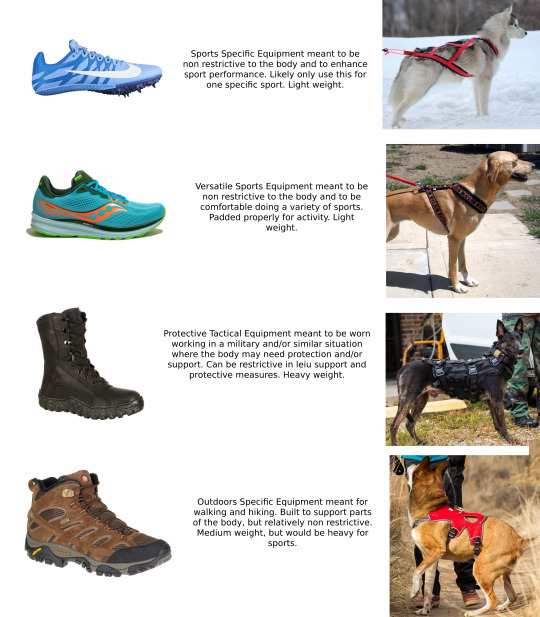
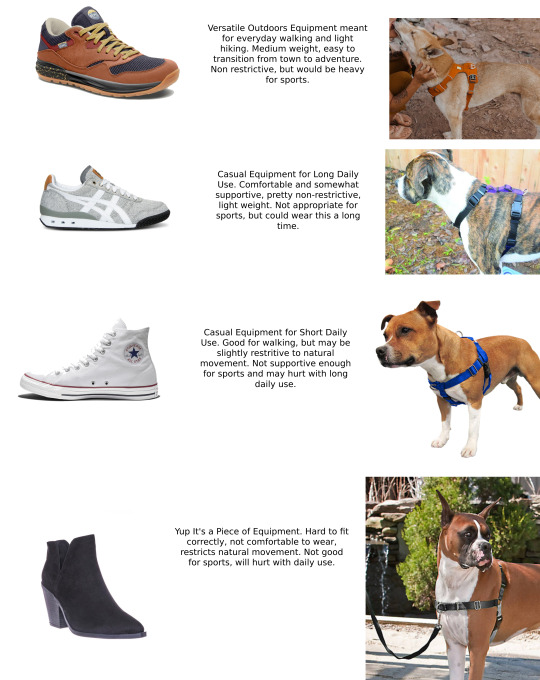
I don’t even know what to call this but understanding Harness Types is important and thus a comparison to something humans wear every day was needed so I made this. I have ~feelings~ about dog gear okay?
3K notes
·
View notes
Text
Hey y'all!
I'm really curious if each individual pokemon has at least one person on earth where that Pokemon is their absolute favorite! If possible, reblog this and add your favorite in the tags and I'll try and compile the data in a spreadsheet or something!
33K notes
·
View notes
Text
We do a lot of posts like "whats something you regret doing with your puppy/new dog" but instead, tell me something you did with your puppy / new dog that you are really proud of, that you would recommend someone do with theirs.
For me it was enforced naptime. Turns out babies need a lot of sleep and become significantly less bitey if they get sleep during the day.
383 notes
·
View notes
Text










Some people collect figures, i collect malinois misspellings
2K notes
·
View notes
Text
"When I refer to terrier work, I am not talking about ratting or bushing rabbits or working raccoons or possums in brush piles or barns, but honest earth work in which a dog disappears underground and out of sight, and then is dug to by someone with a shovel." I FUCKINT LOVE DOG PEOPLE THEYRE SUCH FREAKS
228 notes
·
View notes
Text
I’ve been reading Temple Grandin’s Animals Make Us Human, and something I found very interesting and powerful, is the idea of the moment before the reward being more pleasant to the animal than actually having the reward. She compares it to looking forward to opening a Christmas present. Which absolutely makes sense: for me personally, looking forward to a vacation is more fun than actually being on vacation.
However, I think of my dog and many GSDs, and that moment before being released to a reward does not seem to be particularly pleasant for them. I think of Ribby and Freya screaming with excitement and anxiety as their collars were put on to go for their walks. I think of Ivan’s whining at the doorway when I ask him to wait before being released to run outside and grab his ball. I think of doing shaping with him, and how he will begin to vocalize when he isn’t clicked on every rep anymore. For them there seems to be a higher level of frustration when they know the reward is coming, but the reward is not right now. I don’t think this is at all the same thing as what Temple Grandin is describing and I’m trying to figure out what the difference is. Clearly there is an in-between state here that I don’t fully grasp. Maybe it has to do with clarity (maybe the dog thinks maybe this time the reward won’t come?), or lack of patience. Or maybe what TG is describing is the moment I give the release (which is still before the reward is obtained) rather than the moment before the release is given. Maybe what I’m seeing is rage rather than seeking, to use the book’s terminology.
When I read that whole lines of GSDs have been selectively bred for barrier frustration, it was like a lightbulb went on for me. This is why German Shepherds make such good guard dogs, barking fiercely behind a fence. This is why GSDs are so easy to agitate to snarling frothing barks in protection work. This is why so many GSD owners seem to struggle with leash reactivity. They are so easy to frustrate. We did that on purpose.
So is that GSDs experience frustration when the reward is coming but the reward is not right now, or is it that GSDs do not like being asked to have self-control before getting a reward? This would be incredibly helpful to understand moving forward. Obviously, lowering a dog’s frustration levels in training is important, but what if the dog, at the end of the day, actually just needs to learn how to deal with frustration? How can I work on building my dog’s self control and simultaneously lower his frustration? And, how can I make sure I am rewarding my dog when he is in an appropriate state of mind, to avoid making things worse?
59 notes
·
View notes
Text

The infirm old lady on her sickbed..... knocking on death's door.....
#she IS in pain cus she got in a fight and has a hole in her chest and some gnarly wounds in her ear#but like. this pic was taken right after she dragged me on a mile long walk#shes just very good at looking pitiful#my pets#lulu
1 note
·
View note
Link
Followers who are genuinely interested in how breeding brachy dogs can be done responsibly and how we are collecting and then using this information to ensure the dogs are not harmed by their physical traits, I’d give this page a decent look-through as there’s everything from scientific papers to videos of tests to example dogs and more. Really quite interesting stuff!
17 notes
·
View notes
Note
Lulu is afraid of bowls that wobble, ESPECIALLY metal bowls that wobble
What weird irrational fears do your dogs have? One of mine is terrified of balloons and skateboards, and the other hates the sound of soda cans opening.
zoe and oliver are both afraid of Everything. houston is the only golden retriever afraid of water. sivi is terrified of children, especially if they are on a scooter.
37 notes
·
View notes
Photo

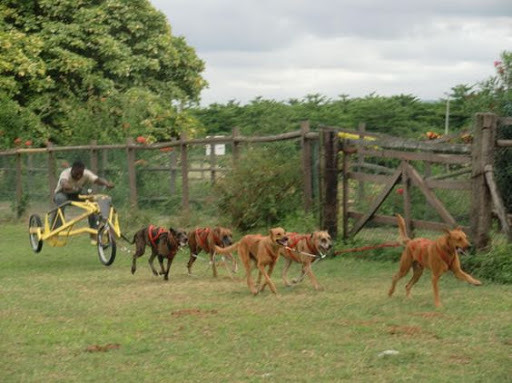

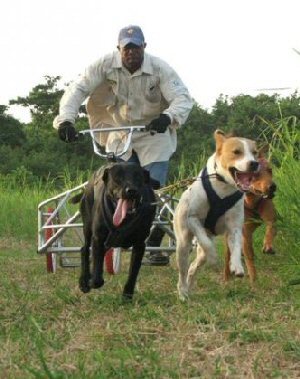
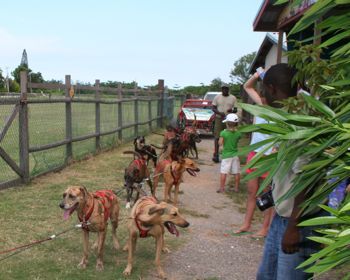
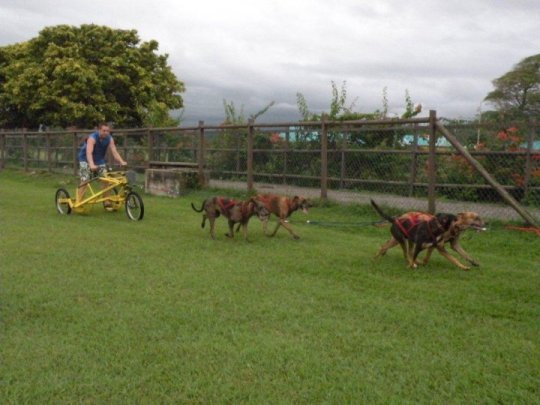
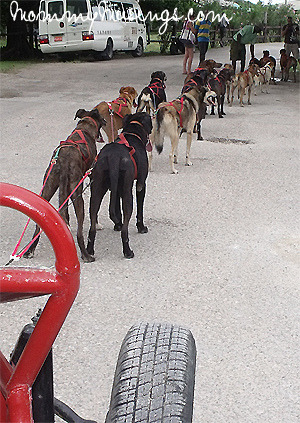
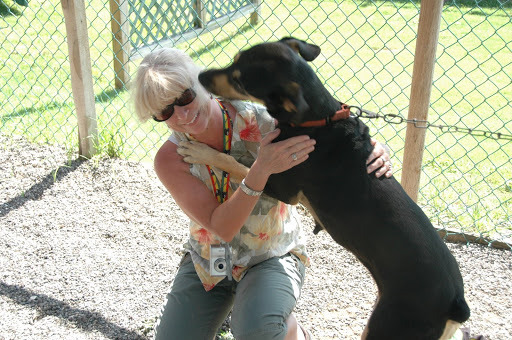


The Jamaica Dogsled Team is a team of sled dogs and mushers headquartered at Chukka Caribbean Adventures in Ocho Rios, located in Saint Ann Parish, Jamaica. The dog team is made up of strays rescued by the Jamaica Society for the Prevention of Cruelty to Animals and offers dryland dogsled rides, along with the adventure center’s other outdoor experiences. In addition, the two mushers Newton Marshall and Damion Robb, compete in sled races throughout the US and Canada, using leased dog teams. (Jamaican dogs taken out of the country are not allowed to return due to quarantine regulations.) Country music singer Jimmy Buffett’s Margaritaville is the team’s major sponsor.
Keep reading
582 notes
·
View notes
Note
I was living vicariously through your sledding with the dogs and this year I said fuck it “imma make myself a dog sled”. The husband bought me a heavy duty sewing machine and now I’m just turning out dog harnesses like a mad woman cause there are so many colour combos I like and I’ve only got two dogs...XD. Question tho. Do you have any good sources and types of harness and each ones use? I can’t seem to find anything but adds.
If you are interested in harness making HERE is a great article by Shilon Bedford, who is now retired, but was a very renowned harness maker in the community, which describes how best to fit and measure a dog for a harness. This should be a good reference for those making their own harnesses for pulling.
OKAY, jumping into the history of harness design:
Historically dog harnesses made by Europeans and Native peoples differed greatly. Early European designs took after draft horse harness (we even took carting horse commands like Gee and Haw and used them for directional commands). HERE is a nice article with some historical reference photos of European designs.
Below: Canadian Inuit Dogs with European style “Leather Collar Harnesses”

Below: Dog team in European style leather horse collar harnesses
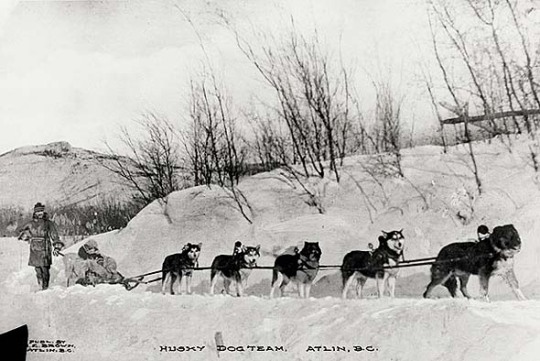
MUSH: A Beginner’s Manual of Sled Dog Training by the Sierra Nevada Dog Drivers, Inc is a great reserouce book for any musher. They describe these European style harnesses:
The leather collar harness is no longer in racing use. Of historic interest is the leather horse collar style. It was extremely popular in the early days of the All Alaska Sweepstakes. The harness is completely made of leather with a padded leather collar being its main feature. To distribute the pull evenly, the two side straps are attached to a hard leather curved loop set outside the soft padded leather collar. A belly band, side straps and a single tree complete the harness
Here is a diagram of common sledding/pulling harness types we see today, most of which are based on the X-Back which is a Native design:

A.) the X-back aka the Siwash Harness was designed by native peoples and was used to run fast trap line runs. (Mush: A Beginner’s Manual of Sled Dog Training, Charlene G. La Belle, Sierra Nevada Dog Drivers Inc)
X-back styles would have been used because a trap line would be in a tighter space, dogs wouldn’t necessarily have the width behind them for a spreader bar like we see in freight harnesses and European harnesses. This is also conducive to the Fan-Hitch style of hooking up dogs. Fan-hitch is a traditional way of hooking up dogs and is still seen in Greenland. It looks like this:

When running in a fan hitch, you would also want a harness that is flexible as dogs may change possessions or be close together. Also there are different kinds of fan hitches: Canadian & Greenlandic! HERE is a nice article on that from the online publication The Fan Hitch which has a ton of great information about inuit sled dogs.
Below are some photos from Peary’s Arctic Expeditions around 1909 of dogs wearing native style harnesses. The harnesses were typically made from seal skin, thus we get a more flexible design we still see today as opposed to the rigid materials used in the European style harnesses (wood and more traditional leathers would have not been available to the Inuit).


There is a really nice article about an Inuit Dog Harness from the late 1800′s from Greenland that now resides in the Ski Museum in Norway. This harness, called Astrup’s Harness, was lended to Jonas Warme Moe to study and recreate with modern materials. HERE is his blog post detailing that, along with some nice photos of a Greenland dog modeling the harness.
Below: Greenland Dog wearing recreated Inuit style harness
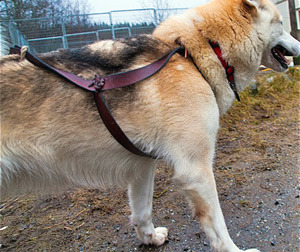
It is meant to give the dog full range of movement. This is best for dogs that have a nice straight gait. A dog that doesn’t run straight will find that this harness may twist or tangle.
You can find a x-back from many retailers, pretty much all sledding harness retailers will have one since this is the basic harness. X-backs are what we think of when we first think sled dog harness and they tend to best fit sled dog breeds. In my opinion, it’s best to start with a standard x-back and then adjust to see what your dog may need differently.
Below: Siberian Husky in modern x-back style harness
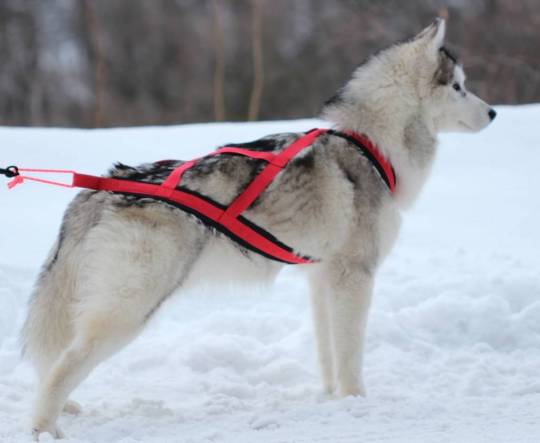
B.) this is the Sidepull Harness or as it’s better known in some circles the “half-harness” or “shorty harness. The Howling Dog Alaska Distance Harness is a good example.
Interestingly enough, when I was looking for examples of Siberian native harness to compare to the Inuit Harnesses above I found several photos of modern Chukchi people using half harnesses with their dogs.



The middle dog was an Iditarod competitor with the Russian musher Mikahil Telpin. Unfortunatly I do not have a lot of reference of what the Chukchi would have used historically since many historical photos of dogs of Siberian origin are of dogs being mushed by Leonard Seppla, who used European style collar harnesses as far as I can tell.
A short harness allows pressure to be taken off the dog’s hips (an x-back does put some pressure on the hips of the dog if the item they are dragging is much lower than the spine of the dog). This harness is good for dogs of nearly all body shapes because it is only half the length of the dog and is not meant to take advantage of the dog’s full body power. It’s best for extreme long distance since the dog is not pulling through the full extent of its body and is popular with Iditarod mushers. Here’s an article by Iditarod musher Aly Zirkle on why she uses short harnesses.
C.) the H-back harness. This harness takes aspects of the x-back and mixes them with the Horse Style harness. Like the shorty harness the H-back was designed to help take pressure off the hips of the dog. A popular example is the Dragatten Multi Sport Harness or the Non-Stop Freemotion Harness. H-back harnesses can come with or without a spreader bar (see in the freight harness). What differentiates this harness the most is the style of the cross straps on the back of the dog. H-backs are often used to fit long and broad dogs which is why they are pretty popular with mushers who use pointers and pointer cross dogs as well as those doing long distance.
Below are examples of an h-back with and without a spreader bar modeled by an Alaskan Husky:
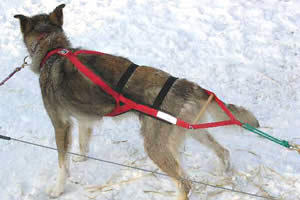
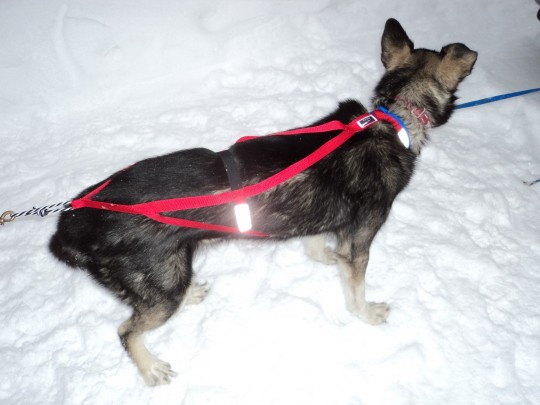
D.) The freight harness or with some adjustment to the design, a weight pull harness. These harnesses are made for the big guys and for pulling heavy weight. Freight Harnesses likely originate from mixing native siwash style harness and heavy duty carting harnesses from Europe.
Freight harnesses usually have a much lower attachment point than other harnesses because it takes pressure off the hips when pulling large loads. They also usually have a spreader bar, but not always.
These kinds of harnesses can also be helpful to dogs that are tall. With a traditional x-back, a tall dog may struggle to correctly pull to their full power since they are tall and the weight is low thus their tug line is not at an optimal angle.
Below: Some examples of Freight Harnesses

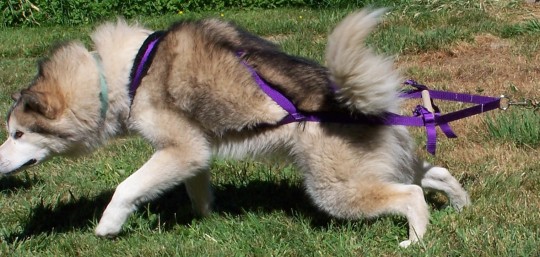

So what differienciates a Freight Harness and a regular H-back with a spreader bar? The attachement point! Observe how the spreader bar in a regular H-back sits above the tail and how it sits BELOW the tail in a freight style harness!
Many outfitters make freight harnesses but the Non-Stop Nansen Stick Harness is popular amongst mushers I know. For a unique freight harness, Howling Dog Alaska makes their Wheel Dog Harness which has a lower attachment point and design like many freight harnesses, but does not include a spreader bar. I’ve included it above (the yellow harness) as reference.
The spreader bar in a freight design is to keep the harness from pinching the hips of the dog, but many people like the Wheel Dog harness because it does not include a spreader bar. Spreader bars can be at risk of breaking since many are made of wood. Non-stop solves this issue in their design by having their spreader bar made of aluminum. However many mushers try to eliminate as much metal as they can from their dog’s set ups. In long distance mushing you want as little metal on your dog at any given time. Touching metal can make dogs more prone to frost bite. Spreader bars can also interfere with the gait of the dog if not properly measured and adjusted.
Well I hope that was helpful!
473 notes
·
View notes
Text
YES THIS
It seems like a lot of people just have an idea of a dog in their head and think that any deviation from it is "bad" when its just the dog communicating in a different way. Its really baffling to me because literally all it does is make it more stressful for the dog AND for yourself. Like, yall, just chill out.... stop worrying about having your dog fit this idealized mold...... Like, a dog is its own individual! Get to know them, spend time understanding how they communicate with you, respect their boundaries! Its not hard, people just make it out to be difficult because they're not actually listening to their dog, they're applying this fictional Ideal Dog to their real life dog and getting confused and upset when the two don't line up.
communicating boundaries != aggression
I see this mix-up happening a lot at my current job and it drives me nuts, especially when puppies are involved.
All the situations I’ve seen are similar to our family being concerned and startled when Gunner grumble-growled at them for trying to move him off the couch by lifting him by his butt. He doesn’t like to be moved by his butt and he’s telling you so by making that noise - it does not mean he wants to eat you and it certainly doesn’t mean he’s aggressive. My dogs are allowed to communicate their boundaries so long as it does not involve their mouth. If their mouth becomes involved, YOU are being the aggressor and have ignored their original warnings (via body language, vocalizations, and probably them attempting to leave the situation entirely).
When a schnauzer puppy comes in for his first groom and starts grumbling because you keep moving him around in ways he’s not used to, has communicated multiple times that he doesn’t like X, and he’s been putting up with it for an hour, it also doesn’t mean he’s aggressive. It means he’s reaching his limit (and he’s a schnauzer). Goldens and doodles and whatevers may not growl in these situations, they may be more likely to whine/cry/hide when they are reaching their limit… but that doesn’t make all the other dogs aggressive.
This expectation for ALL dogs of all ages to behave like this perfect, idealistic golden-esque canine drives me nuts, and I am seeing it most often with the #adoptdontshop type crowd… who I personally feel are often lacking in their knowledge when it comes to different breeds.
It’s really driving me nuts, y’all. They rather have a dog behave by communicating its boundaries via submission, despite lauding themselves as fear-free and positive and all this, than a dog who may be more confident and more naturally inclined to say “HEY. fuckiNG stop! touching! me!!!” By which I mean, again, a whine vs a growl. Or even prior to that, hiding/making themselves smaller vs confidently moving away and ignoring you. (lololol just picture a dog trotting away, head completely away from you, and you go after them and try to grab them by their butt/hips again, and they turn and growl. UH YEAH because they think you’re an IDIOT for not unDERSTANDING what they are effectively communicating!!! you jerk!!!)
And any dog not acting within the parameters of the former gets labeled as aggressive in some way or another, with no regard whatsoever for their breed and its natural inclinations. Schnauzers are not bichons.
I think I’m just repeating myself at this point lmao. I hope I’m making sense. And then it drives me crazy all over again when they’re trying to shape the dog into an adult that once again only fits within this very specific mold… where they should all just be goldens or something… gets along with everybody, no growling, soft, goes to the dog park with no issue, blah blah blah.
The expectations we put on dogs is uh, sometimes a bit ridiculous, especially if we are also just throwing out their breed personality entirely. Maybe they just extra don’t understand how a smaller dog would act like anything but a bichon or havanese.
22 notes
·
View notes